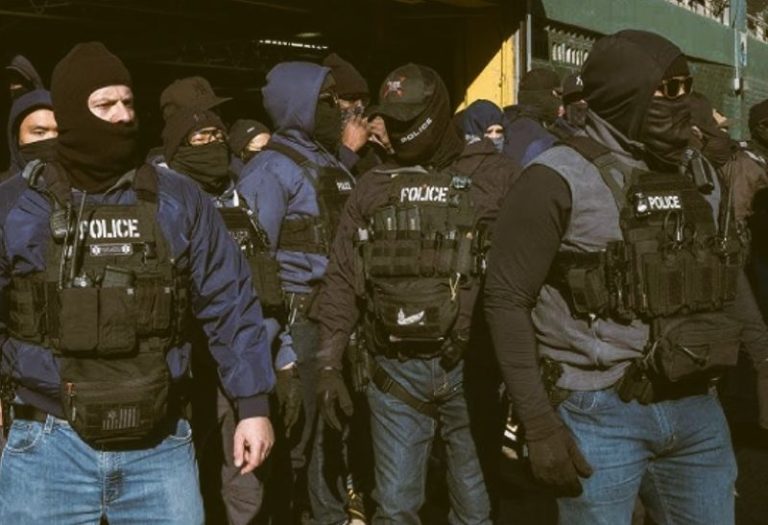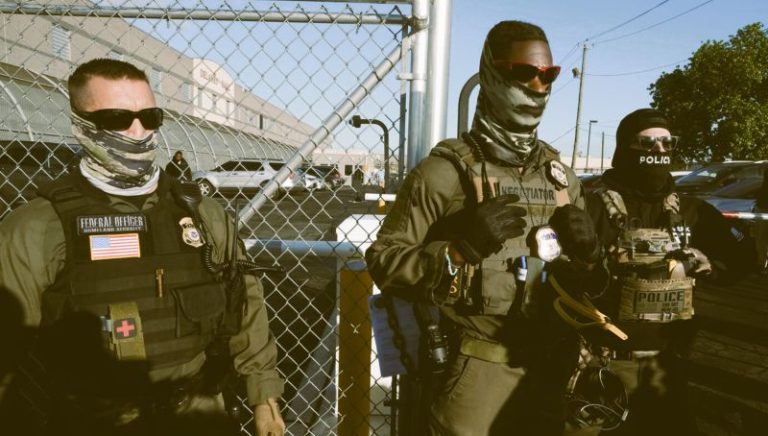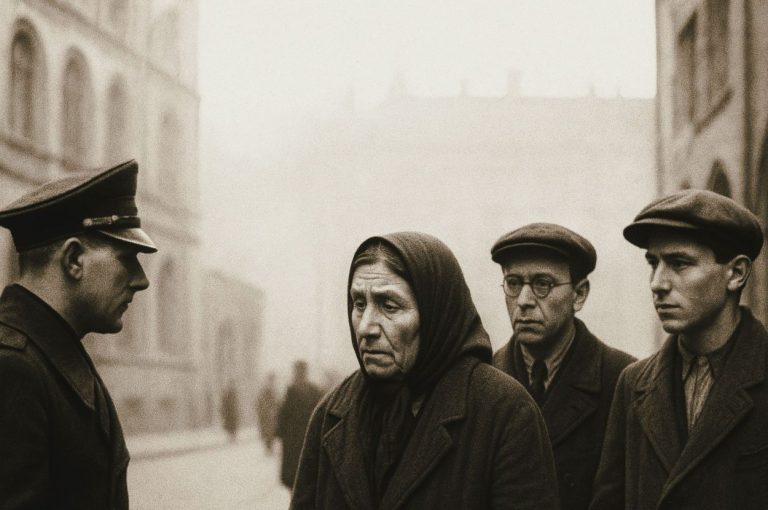
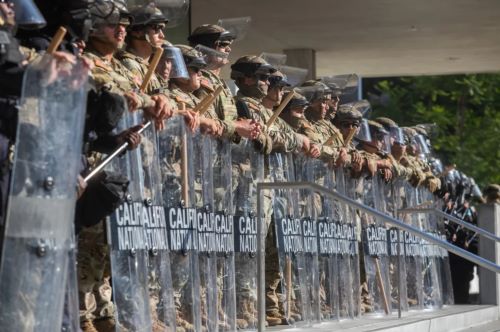
To defend civil liberties is not only to protect the rights of immigrants. It is to protect the integrity of the Constitution itself, for everyone.

By Matthew A. McIntosh
Public Historian
Brewminate
The Expanding Front Line
In the American imagination, the border is a place of tension, a symbolic line that separates inside from out, citizen from stranger, order from chaos. But the line is no longer just a line. It is becoming a zone, one that stretches deep into the interior of the United States and pulls with it a growing machinery of enforcement.
That machinery is increasingly militarized. Not in the traditional sense of tanks and rifles, although some equipment would not look out of place in a war zone, but in its posture, presence, and purpose. Immigration enforcement today is marked by tactical raids, surveillance technologies, and a heavy-handed federal presence that often bypasses local governance and community trust.
The consequences are far-reaching. What began as a response to unauthorized border crossings has evolved into a broad assertion of federal policing power that reshapes how civil liberties are defined and protected, not just for immigrants, but for everyone.
Surveillance, Stops, and the Disappearing Fourth Amendment
The U.S. Border Patrol operates within 100 miles of any external boundary. That zone includes major cities like New York, Chicago, Los Angeles, and nearly two-thirds of the American population. Within it, agents have authority to conduct warrantless stops and searches under what courts have deemed “reasonable suspicion.”
In practice, that often means racial profiling, roadside interrogations, and bus terminal sweeps where passengers are questioned about their citizenship without probable cause. The American Civil Liberties Union has documented hundreds of such encounters, many involving U.S. citizens or lawful residents who were stopped and detained based solely on their appearance or accent.
The Fourth Amendment was meant to protect against unreasonable searches and seizures. But the border exception, originally intended for ports of entry, now serves as a legal loophole stretched far beyond its original context. It is an erosion hidden behind a uniform.
The use of facial recognition, drone surveillance, and license plate readers further complicates the equation. These technologies are deployed in the name of immigration enforcement, but their data is often shared across agencies. The distinction between border and interior policing becomes increasingly blurred.
The Criminalization of Migration
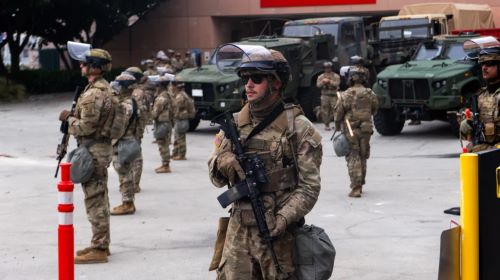
For much of American history, crossing the border without authorization was a civil offense, not a crime. That changed in the late twentieth century with legislation that reframed undocumented entry as a criminal act. Since then, policies have moved steadily toward punitive responses – detention, prosecution, and deportation.
The 287(g) program, for instance, allows local law enforcement to act as immigration agents. Counties that sign on to this program see their deputies deputized, creating a pipeline from routine policing to immigration custody.
In theory, the program targets individuals with serious criminal histories. In reality, traffic stops and minor offenses often become pretexts for immigration checks. Families are separated. Detainees are sent hundreds of miles from their homes. Due process is limited. Language access is inconsistent.
This convergence of criminal and immigration law, often called “crimmigration,” expands state power while shrinking individual rights. It reclassifies people based not on harm caused, but on presence alone.
And once someone is inside the immigration system, the protections that normally govern legal proceedings, such as a right to counsel, do not apply in the same way. Immigration court is not criminal court. The burden of proof is lower. The odds are stacked.
Private Detention and Profit
The growth of immigration enforcement has also fueled a parallel industry: private detention. Companies like CoreCivic and GEO Group operate a significant portion of the nation’s immigration jails. These are for-profit enterprises with shareholders, marketing departments, and political action committees.
They are incentivized not by justice, but by occupancy. The more beds filled, the better the returns. Contracts often guarantee a minimum number of detainees, creating a financial motive to detain as many individuals as possible, for as long as possible.
Inside these facilities, conditions are often dire. Medical care is inconsistent. Allegations of abuse are widespread. Detainees, many of whom have not been accused of any crime beyond their immigration status, are held in carceral conditions that resemble prison more than administrative custody.
This system also makes accountability difficult. Private contractors are shielded from many of the transparency requirements that apply to public agencies. They are less subject to oversight, yet hold extraordinary power over the lives of detainees.
Communities in the Crosshairs
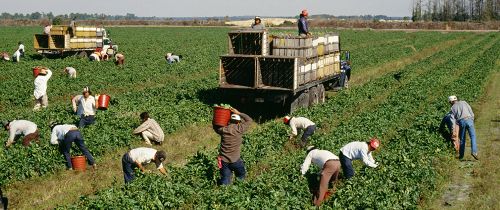
Militarized immigration enforcement does not exist in a vacuum. It impacts neighborhoods, schools, workplaces, and houses of worship. Families become afraid to call police, even in emergencies, for fear that doing so will lead to deportation. Parents avoid hospitals. Children fear losing their caregivers.
This has ripple effects. Public safety is undermined when community members avoid contact with authorities. Health outcomes suffer when people delay or avoid medical treatment. Education is disrupted when children are pulled from school or must care for siblings after a parent’s detention.
Even U.S. citizens are not immune. When federal agents raid homes or conduct workplace sweeps, due process is often overlooked. There have been documented cases of citizens wrongfully detained or deported because they lacked paperwork on hand to prove their status.
What this suggests is that the erosion of civil liberties does not stay confined to any one group. It spreads. It normalizes a mode of policing that is more forceful, less accountable, and increasingly disconnected from democratic oversight.
Resistance and Legal Pushback
Despite this trajectory, resistance is not absent. Civil rights groups have mounted successful challenges to unlawful detentions and warrantless searches. Some jurisdictions have opted out of federal cooperation, passing sanctuary policies that limit the role of local police in immigration enforcement.
Courts have, at times, struck down policies that overreach. In 2020, the Supreme Court ruled that deportation orders could not override basic constitutional protections. More recently, several appellate courts have expressed concern over the use of invasive surveillance in immigration cases.
But the legal landscape remains contested. The executive branch retains broad discretion over immigration matters. And as enforcement priorities shift with each administration, so too do the boundaries of what is considered permissible.
What Kind of Country
The broader question looming over all of this is not just legal. It is moral. What kind of country does the United States wish to be?
A nation that militarizes its borders is also one that changes its relationship to its own people. When immigration enforcement adopts the tools and tactics of warfare, it brings that logic inward. It turns neighbors into suspects. It prioritizes containment over compassion.
The erosion of civil liberties rarely happens all at once. It happens in increments, justified by necessity, reinforced by fear, and accepted through silence.
Militarized immigration enforcement may begin at the border. But it does not stay there. It moves. And with it, so too does the frontier of our freedom. To defend civil liberties is not only to protect the rights of immigrants. It is to protect the integrity of the Constitution itself, for everyone.
Originally published by Brewminate, 07.23.2025, under the terms of a Creative Commons Attribution-NonCommercial-NoDerivatives 4.0 International license.
